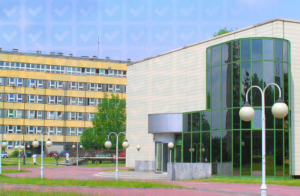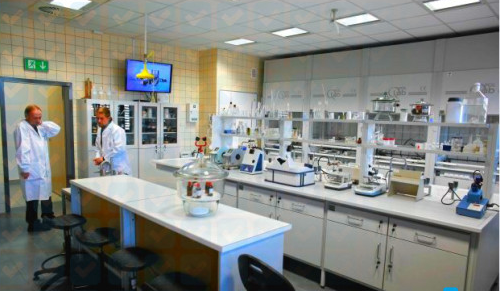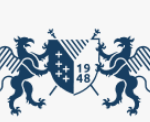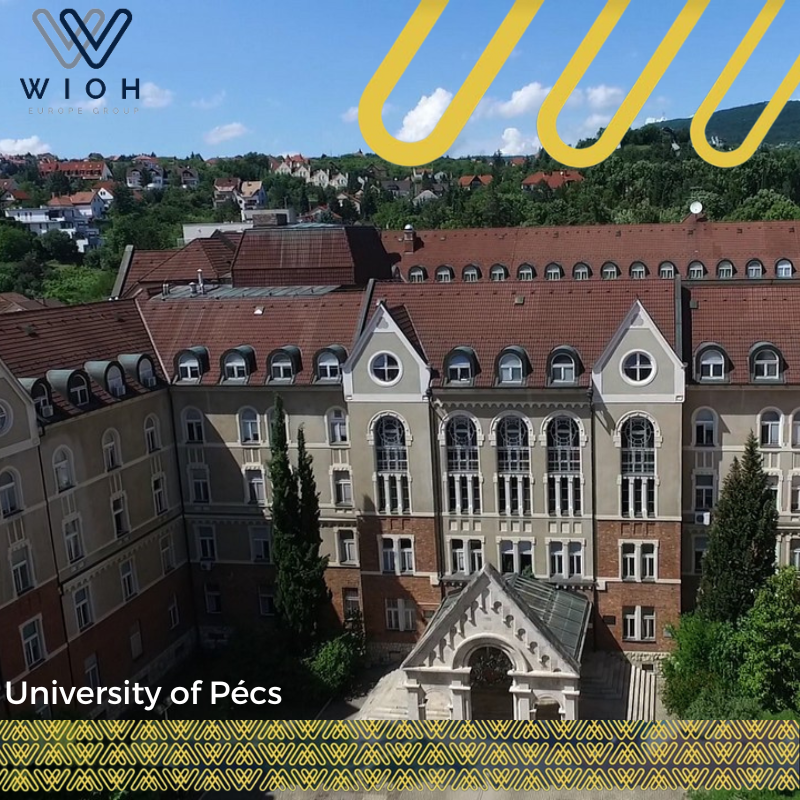Medical University of Silesia in Katowice is a Polish medical university of superior scientific standing and is an important educational, research and clinical center, and performs wide tasks in the field of preparing medical personnel with the best qualifications in healthcare.
University Rankings:
According to QS ranked +1001 for the year 2021
According to SJR, it was ranked 23rd in Poland, and 493rd in the world for the year 2021
According to the nature index it ranked 33 in Poland, and 2754 in the world for the year 2020
According to ARWU, it was ranked 7 in Poland, and 901 in the world for the year 2020
University and Campus History:

The Medical University of Silesia in Katowice is entering its seventieth academic year. It has gone through successive stages of development from a university with one college to the status of a multi-directional university center and colleges.
The university was founded in 1948 as a medical academy with one medical faculty and a dental department based in Rokytnica Bytomska, and a year later it was renamed Medical Silesian Academy, then Silesian Medical Academy. Ludvik Warinsky.
During the first five years of its existence, the Academy, comprising one medical school and one dental department, launched a full range of clinical and theoretical modules necessary to carry out the teaching process.
I struggled from the start with the dispersal of the clinical base. Theoretical departments, the rector’s office and the library were located in the post-hospital complex in Spółka Bracka in Rokitnica, while the clinical departments were located in hospitals in Zabrze and Bytom. _ The construction of the foundations of the Medical University of Silesia was accompanied by a project to build a university campus in Zabrze, but it was not implemented due to the lack of investment funds. It also proved impossible to integrate the Academy into Bytom. Thus, out of necessity, the “temporary” location of the clinical base was extended to other cities of the Silesian region – Lublinic, Tarnovsky Gori and Katowice. Three clinical hospitals were organized in Zabrze and Piskopetsi, in which the Academy acquired all the hospitals, covering all inpatient and specialized clinics.
In the second half of the 1950s, efforts were made to move it to Katowice and build a university campus in Katowice-Legota. These plans – which opened a new chapter in the Academy’s history – took real form in the following decade, when the rector’s office was moved to the provincial capital, and the Fourth Clinical Hospital was opened on the basis of the largest hospital in Katowice at the time. Mielęcki,
And in Katowice-Legota, the foundation stone was laid for the construction of the Central Clinical Hospital, units of medical theory, student houses, and a hotel for nurses.
In 1971, the final decision of the Council of Ministers was made to establish Katowice as the seat of the Silesian Medical Academy.
In the 1970s, the university became the largest medical academy in the country, three new departments were launched: the department of pharmacology with the department of medical analysis in Sosnowiec, and – in the facilities that were gradually commissioned to the facility in Katowice-Legota – another medical and nursing department (which was Incorporating it over time – as a department – into the structure of the Second Faculty of Medicine)
Further expansion of the educational profile has taken place already in the last decade – in 2001 the Faculty of Health Care was created in Katowice, and in 2002 the Faculty of Public Health in Paitum.
Teaching staff:
University President: Prof. Dr. Tomasz Szczepański
Staff: There are currently 1,290 academic teachers, including 362 independent staff.
Students: About 10,000 students study in all faculties.
Faculties:
The campus of the Medical University of Silesia in Katowice includes five faculties:
1- Faculty of Medical Sciences in Zabze
Medical and medical specialties – Dentistry. 43 chairs and 4 independent units. This tradition dates back to 1946. Rich scientific, research and educational facilities.
2- Katowice College of Medical Sciences
Specialization: Medicine and Neuroscience. The college consists of more than 340 academic teachers, 40 departments, 34 clinics, 18 departments and 4 clinical departments. The college has a modern center for medical teaching and simulation
3- Faculty of Pharmaceutical Sciences Sosnowiec
Fields: Pharmacology, Medical Analytics, Cosmetology and Medical Biotechnology. Rich teaching and research base on a modern teaching campus and attractive sports facilities.
4- Katowice College of Health Sciences
Founded in 2001. Fields of study: Nursing, Obstetrics, Physiotherapy, Electroradiography, Medical Extension. PhD and postgraduate studies. Rich research and educational base as well as sports facilities
5- College of Health Sciences in Bitum
Public health and nutritionist. It has been around since 2001. It operates on the basis of 12 research and teaching units. Master’s and Bachelor’s Studies
University’s library :
 _ In March 1948, the Medical Academy was established in Rokytnica Bytomska, the main library was established in July of the same year. With the transformation of the Medical Academy into the Medical University of Silesia, the library changed its name to the Main Library of the Medical University of Silesia.
_ In March 1948, the Medical Academy was established in Rokytnica Bytomska, the main library was established in July of the same year. With the transformation of the Medical Academy into the Medical University of Silesia, the library changed its name to the Main Library of the Medical University of Silesia.
_ In 1953, a branch of the main library was established in Zbrze, which, over time, assumed the basic tasks and functions of the main library. In Rokytnice, there are groups that are mainly used by students in the first two years.
_ The Library in Katowice, which from the beginning has served as the main library, meets the library and information needs of the academic community. In 1975, the university’s library and information network consisted of the main library, its two branches in Zabrze and Rokitnica, and 65 clinical and departmental libraries.
_ In 1989 a central organizational structure of the library was obtained by liquidating an extensive network of clinical and departmental libraries and organizing departmental and large departmental libraries into larger university centers.
_ Today the SUM library consists of the main library and its branches, and constitutes a unified library and information system of our university. The main library is located in the center of Katowice, and branches are located in Katowice-Legota, Zabrze (together with the reading room in Rokytnica) and Sosnowiec. The SUM library centers cover the needs of five faculties of the university, i.e. the Faculty of Medicine in Katowice, the Faculty of Medicine with the Department of Medicine and Dentistry in Zbrze, the Faculty of Pharmacy with the Department of Laboratory Medicine in Sosnowiec, the Faculty of Health Sciences and the Faculty of Public Health
_ In 2007, due to the name change of the university, the name of the library was changed to the Library of the Medical University of Silesia in Katowice.

The Library of the Medical University of Silesia in Katowice is a university-wide organizational unit that performs one of the fundamental legal functions of the University, which is the dissemination and multiplication of scientific achievements through the collection and sharing of library and information collections.
_ The SUM library acts as a center for documentation and scientific information, it carries out service, scientific and educational tasks, and, being a publicly accessible scientific library, it serves the residents of the city and the region.
_ The electronic collections of the SUM library are available in computer reading rooms equipped with the latest equipment.
The library provides its readers with competent assistance from experienced librarians in the field of medical libraries.
_ It houses the richest collection of books on medicine and related sciences in Silesia, which includes nearly 185,000 volumes of scientific books and journals. There are more than 300 Polish and foreign written and printed magazines.
_ ALEPH’s integrated library system is used to collect and process collections, as well as make them available (including ordering and reservation), supporting all library centers.
_ The catalog of SUM collections running within this system informs users of the library’s resources.
_ In the field of teaching and training, SUM Libraries organizes lessons in library training, medical scientific information and training of individual users.
_ As a result of the intensive efforts of the university authorities in recent years, comfortable conditions have been created in the library and its departments for both users and employees (computerized lending rooms, computerized reading rooms with multimedia elements, spacious rooms, modern technology and architectural solutions). This makes the SUM library a unit that occupies a special place in the SUM structure, thanks to which it can play the role of the guardian of scientific thought, being a refuge for the achievements of the University.
Clinical Hospitals:
_ Independent General Clinical Hospital. Stanisław Szyszko of the Silesian Medical University in Katowice
_ Independent Clinical General Hospital Andrzej Mielęcki of the Medical University of Silesia in Katowice
_ Upper Silesian Child Health Center
_ Jana Pawła II Autonomous General Clinical Hospital No. 6 of the Medical University of Silesia in Katowice.
_ Upper Silesia Medical Center. Liszek Jica from the Medical University of Silesia in Katowice
University Medical Center. K. Gibiński of the Silesian Medical University in Katowice
_ Organizational: Ceglana Hospital and Ceglana Outpatient Clinic)
_ Organizational units: Ligota Hospital – CSK and Ligota Outpatient Clinic – CSK
Educational centers at the university:

The Library of the Medical University of Silesia in Katowice is a university-wide organizational unit that performs one of the fundamental legal functions of the University, which is the dissemination and multiplication of scientific achievements through the collection and sharing of library and information collections.
_ The SUM library acts as a center for documentation and scientific information, it carries out service, scientific and educational tasks, and, being a publicly accessible scientific library, it serves the residents of the city and the region.
_ The electronic collections of the SUM library are available in computer reading rooms equipped with the latest equipment.
The library provides its readers with competent assistance from experienced librarians in the field of medical libraries.
_ It houses the richest collection of books on medicine and related sciences in Silesia, which includes nearly 185,000 volumes of scientific books and journals. There are more than 300 Polish and foreign written and printed magazines.
_ ALEPH’s integrated library system is used to collect and process collections, as well as make them available (including ordering and reservation), supporting all library centers.
_ The catalog of SUM collections running within this system informs users of the library’s resources.
_ In the field of teaching and training, SUM Libraries organizes lessons in library training, medical scientific information and training of individual users.
_ As a result of the intensive efforts of the university authorities in recent years, comfortable conditions have been created in the library and its departments for both users and employees (computerized lending rooms, computerized reading rooms with multimedia elements, spacious rooms, modern technology and architectural solutions). This makes the SUM library a unit that occupies a special place in the SUM structure, thanks to which it can play the role of the guardian of scientific thought, being a refuge for the achievements of the University.
Clinical Hospitals:
_ Independent General Clinical Hospital. Stanisław Szyszko of the Silesian Medical University in Katowice
_ Independent Clinical General Hospital Andrzej Mielęcki of the Medical University of Silesia in Katowice
_ Upper Silesian Child Health Center
_ Jana Pawła II Autonomous General Clinical Hospital No. 6 of the Medical University of Silesia in Katowice.
_ Upper Silesia Medical Center. Liszek Jica from the Medical University of Silesia in Katowice
University Medical Center. K. Gibiński of the Silesian Medical University in Katowice
_ Organizational: Ceglana Hospital and Ceglana Outpatient Clinic)
_ Organizational units: Ligota Hospital – CSK and Ligota Outpatient Clinic – CSK
Educational centers at the university:

For more than 20 years, the university has been accredited to conduct English-language studies in medicine, and since the 2014/2015 academic year, it has been conducting English-language studies in medicine and dentistry.
The university also offers education in doctoral and postgraduate studies and is authorized to award doctoral and post-doctoral degrees in the field of medical sciences, health sciences and pharmaceutical sciences.
Its clinics and clinical departments occupy an important place in the local market for medical services by providing medical services at the highest degree of reference. Many of them are listed in the first places in the national rankings as best centers in areas such as cardiology, cardiology, hematology, highly specialized surgery, neurosurgery, ophthalmology, obstetrics, gynecology, pediatrics, nephrology and gastroenterology.
The university has one of the greatest scientific achievements among the medical academies in Poland, with a total number of publications of more than 93,000 publications.
As part of the additional education the university owns in Katowice
SUM University First Age, SUM Secondary School, SUM University Third Age
The research, clinical and teaching base at the university consists of more than 260 organizational units (departments, clinics, clinical departments, faculties, and studies)
The achievements of the Medical University of Silesia constitute the scope and scale of the commitments today and the days to come, and it is an asset worthy of the opening of the Medical University of Silesia






